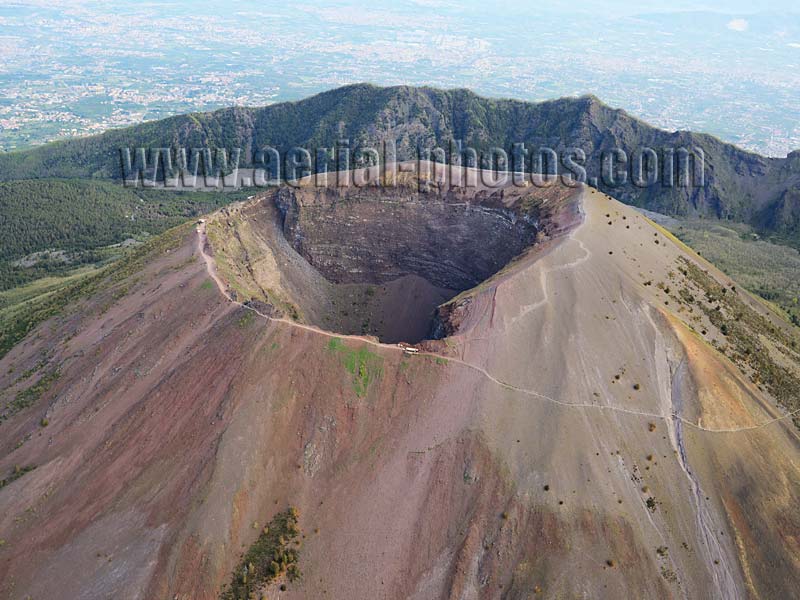
Mount Vesuvius (elevation: 1281m) is one of the most well-known volcanoes in the world. Its current shape dates back to AD 79 when its destructive eruption destroyed the cities of Pompeii and Herculaneum. This view looking north, shows the Vesuvius’ impressive crater (diameter: 450m, depth: 300m), and also a curved mountain 1.7km further north: this is Mount Somma (elevation: 1132m). The Vesuvius is a volcano within a larger volcano (a caldera), and Mount Somma is what remains of the rim of that larger volcano. Pompeii, Metropolitan City of Naples, Campania, Italy.
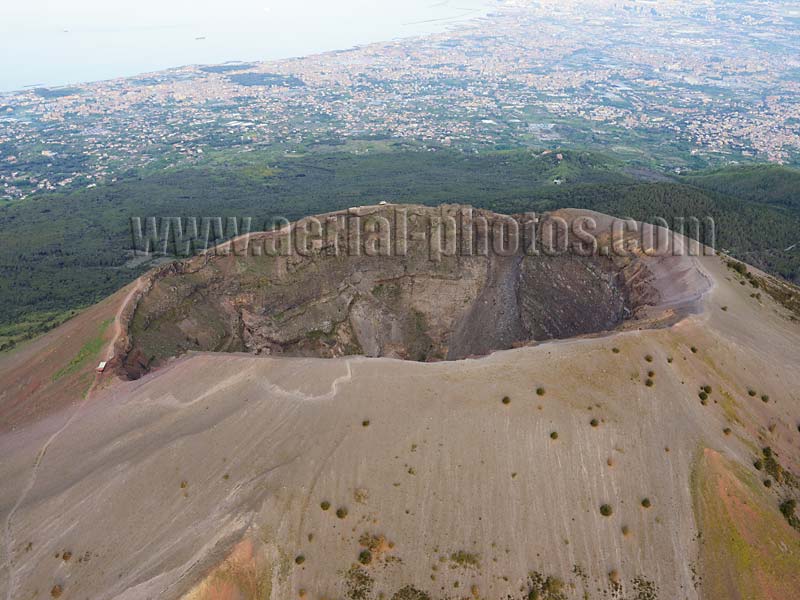
Mount Vesuvius has often erupted (last time was in 1944) with the most known eruption of AD 79 which killed many people at a time in history when this area was much less populated than today: 3.000.000 people live in the shadow of the volcano. Southern Italy is volcanically active (Etna, Stromboli, Vesuvius) as this region is where the African and Eurasian plates collide. Pompeii, Metropolitan City of Naples, Campania, Italy.

Hidden Lava Flow. Wooded eastern slopes of Mount Vesuvius displaying two distinct types of canopy. Metropolitan City of Naples, Campania, Italy.
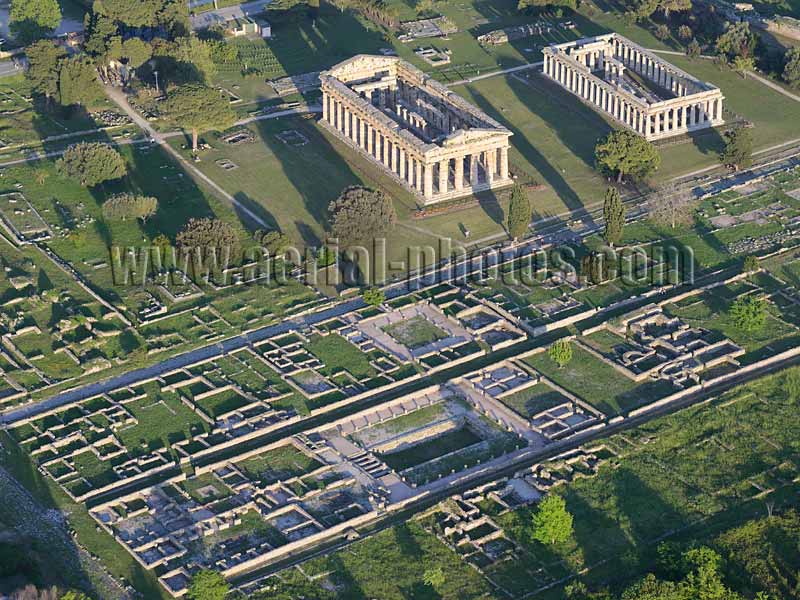
Paestum is an important archeological site recognized by UNESCO. This city was founded by the Greek around the 7th century BC, they named it Poseidonia. Capaccio Paestum, Province of Salerno, Campania, Italy.
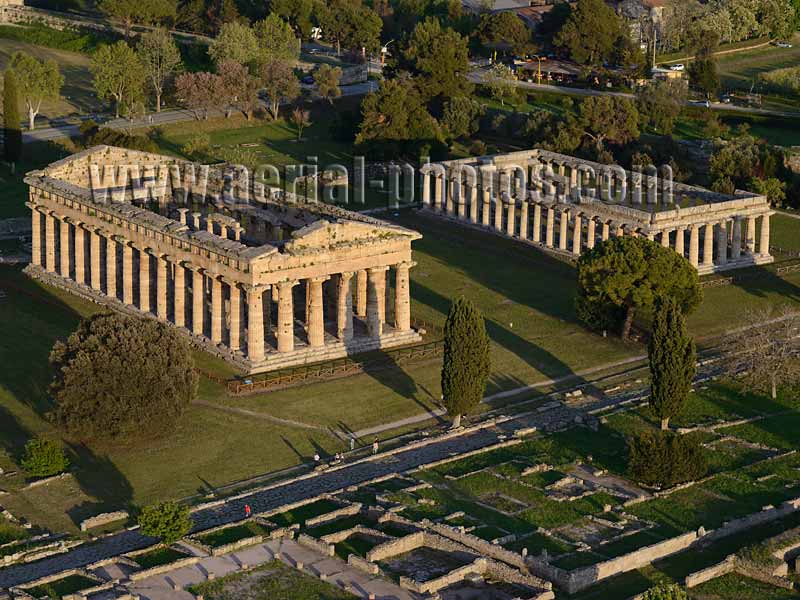
Left is the Second Temple of Hera (circa 450 BC). Right is the First Temple of Hera (circa 550 BC) which it is the oldest building in Paestum. These well preserved ancient temples are remarkable examples of Doric architecture. Capaccio Paestum, Province of Salerno, Campania, Italy.

The Temple of Athena (circa 500 BC) is the third remarkable temple in Paestum. Capaccio Paestum, Province of Salerno, Campania, Italy.

At a distance of approximately 9.5 kilometers from the crater of Mount Vesuvius, stands the ancient Roman city of Pompeii. This city was buried under 6 meters of ash in the volcanic eruption of Mount Vesuvius in AD 79. This deadly ash has preserved many artifacts which allow visitors in Pompeii to have an insight into what life was in the Roman Empire. Pompeii, Metropolitan City of Naples, Campania, Italy.

Being such an important archaeological site, Pompeii is a Unesco World Heritage Site. It is one of the most visited site in Italy and a driving force to the local economy. Pompeii, Metropolitan City of Naples, Campania, Italy.

Watchtower (Torre di Clavel) on the rugged Amalfi Coast. Positano, Province of Salerno, Campania, Italy.
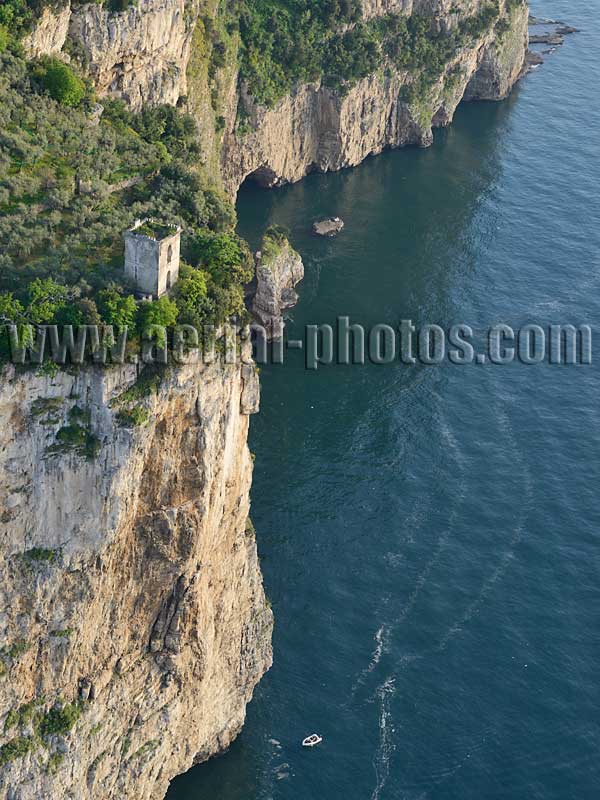
Watchtower overlooking the Bay of Naples. Vico Equense, Metropolitan City of Naples, Campania, Italy.
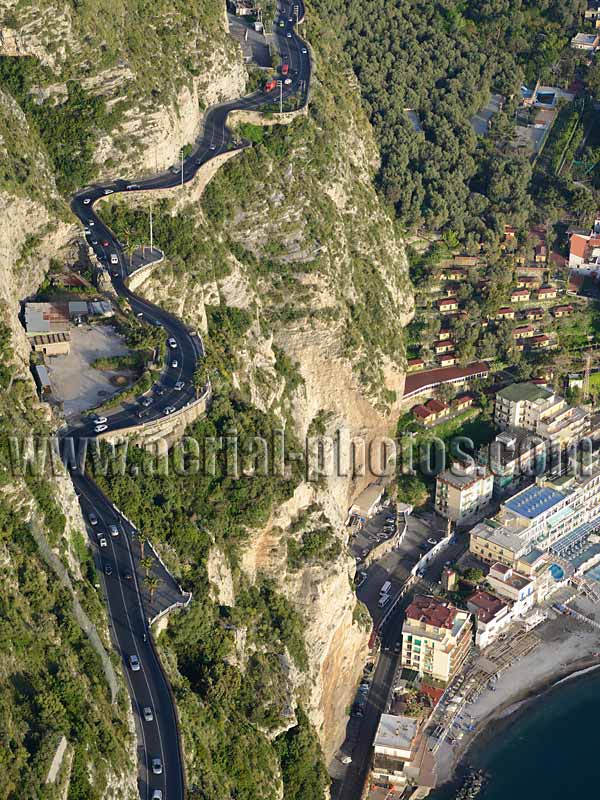
Winding road on a clifftop, high above the city of Meta di Sorrento. Metropolitan City of Naples, Campania, Italy.
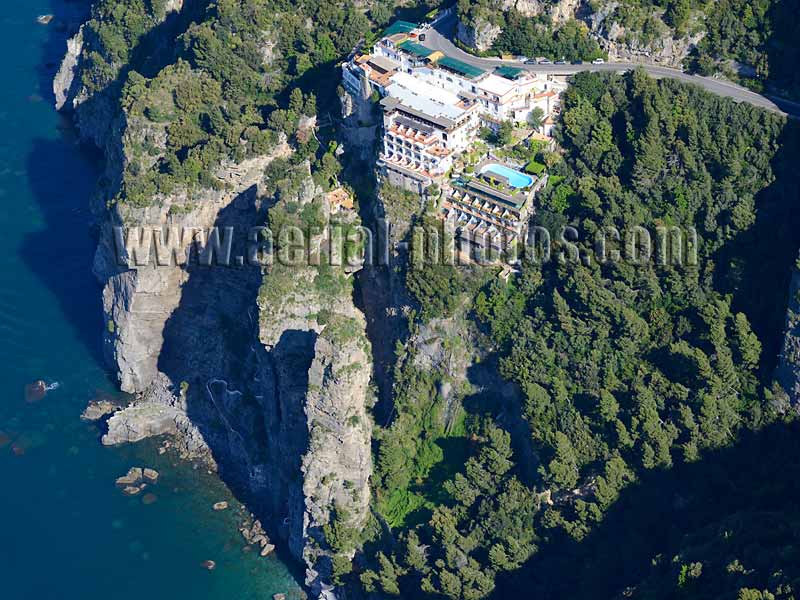
The Grand Hotel Tritone is a luxury hotel built on the top of a craggy limestone cliff, it offers some of the most astounding views of the Amalfi Coast. It has its own secluded beach accessible by an elevator. Praiano, Province of Salerno, Campania, Italy.
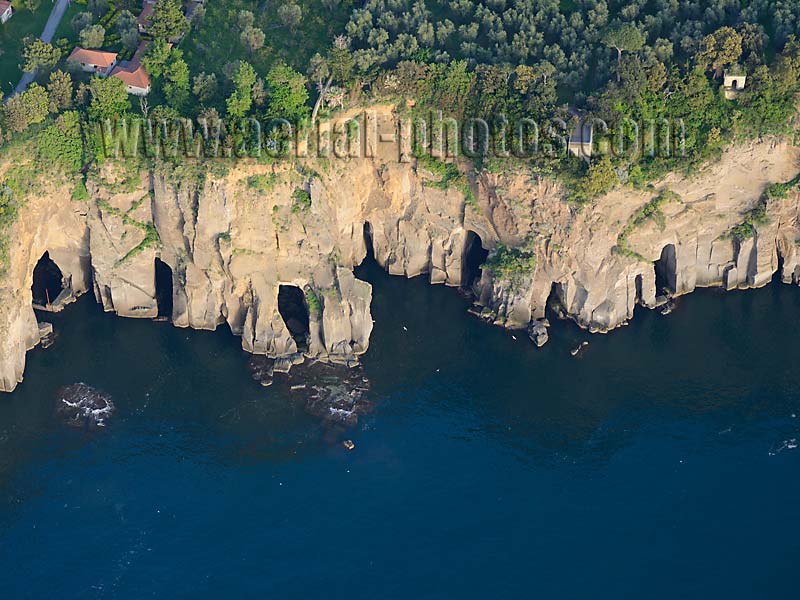
The city of Piana di Sorrento is built on a terrace of tuff (a consolidated volcanic ash) overlooking the Bay of Naples. On the seaside of town, many caves dot the tuff cliff. These were dug by the Romans who dedicated them to nymphs. Piana di Sorrento, Metropolitan City of Naples, Campania, Italy.

Vico Equense is a city built on a tuff terrace overlooking the Bay of Naples. Metropolitan City of Naples, Campania, Italy.
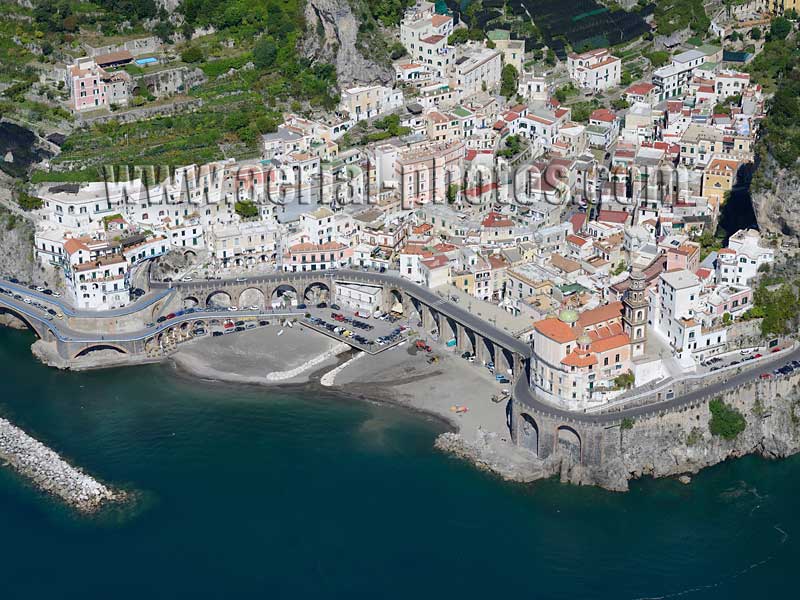
Picturesque town of Atrani. Amalfi Coast, Province of Salerno, Campania, Italy.
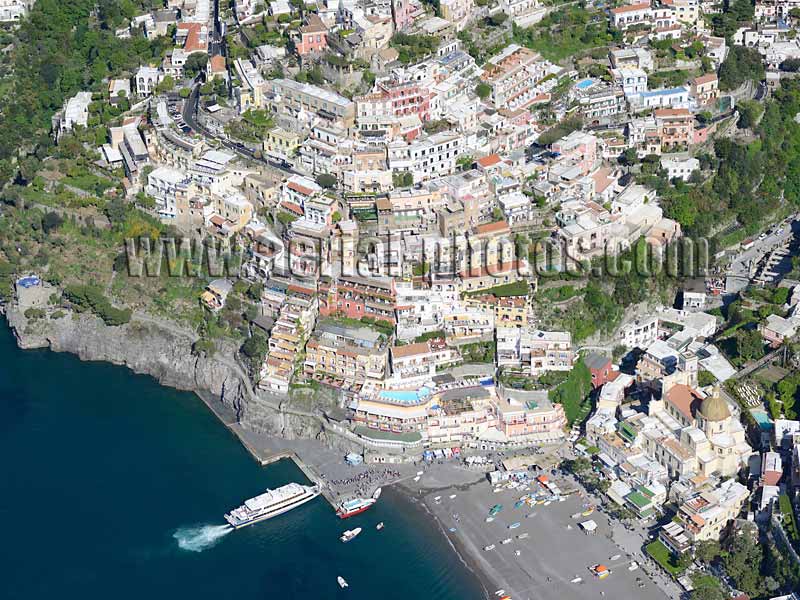
The town of Positano is a famous tourist destination on the picturesque Amalfi Coast, and it was also a favored destination for wealthy Romans to build their villas. From the wharf a ferry service is provided to take tourists to the island of Capri, which is another gem this beautiful region has to offer. Province of Salerno, Campania, Italy.
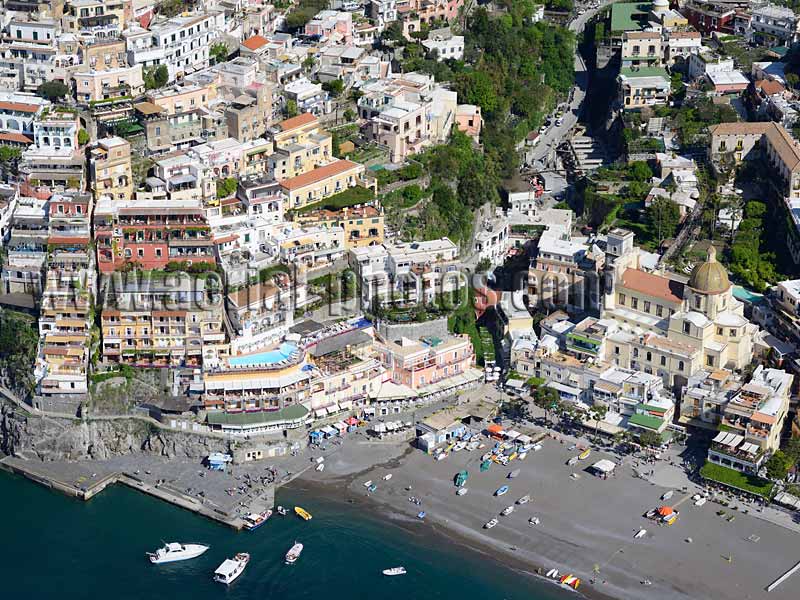
The town of Positano, the beach and the historical Church of Santa Maria Assunta. Province of Salerno, Campania, Italy.

Positano is built on a topographically unfriendly mountainside, but with the steepness every home has a stunning view of the Amalfi Coast. Province of Salerno, Campania, Italy.

















